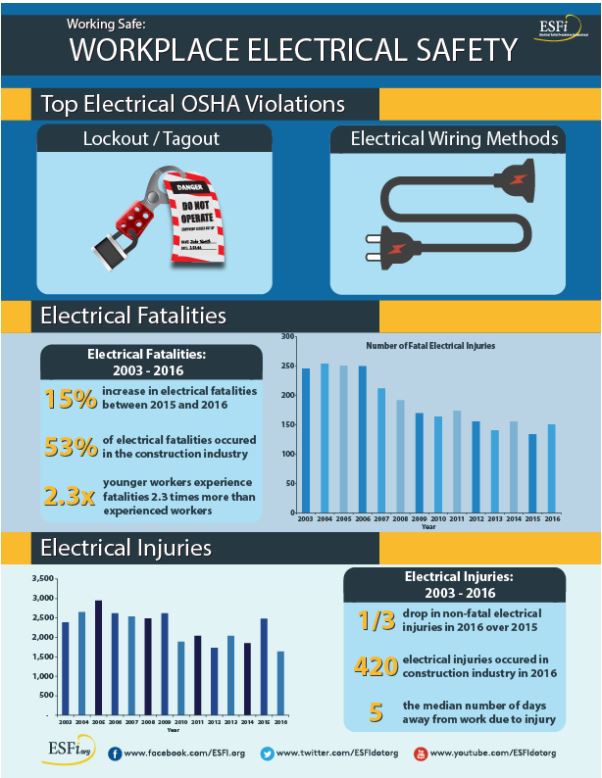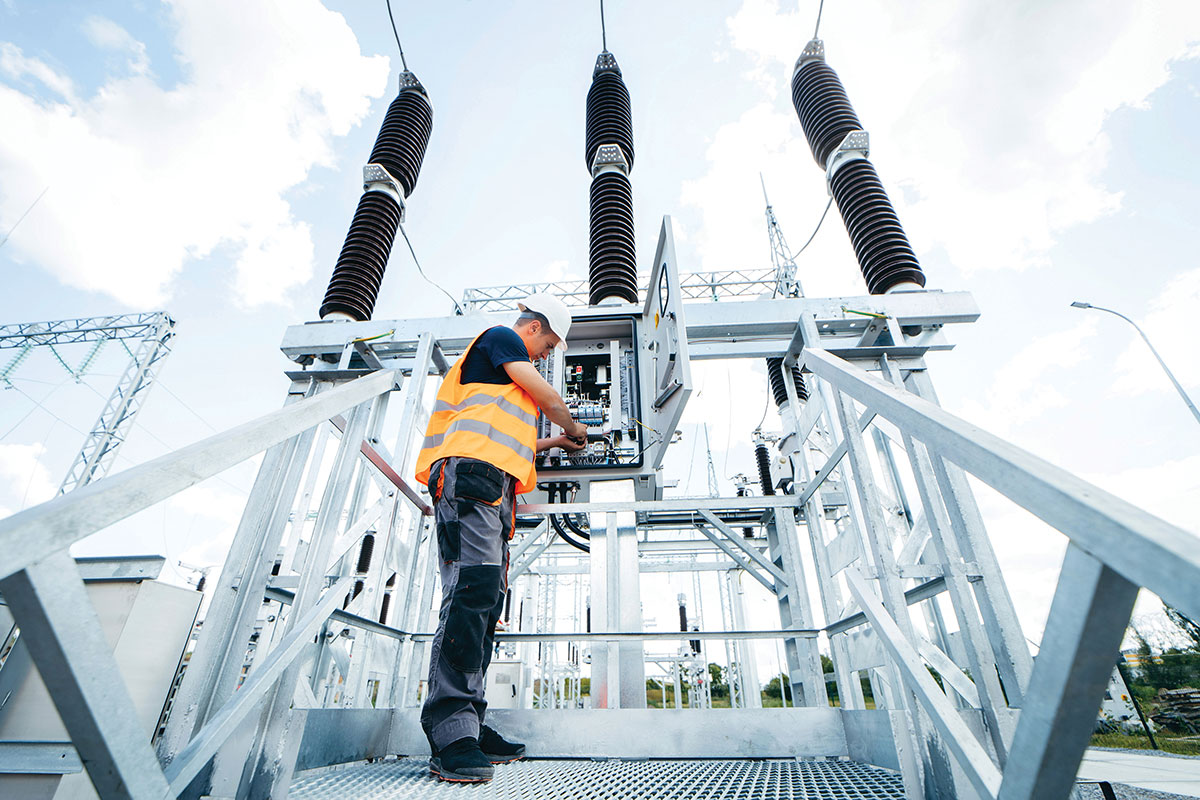The Electrical Safety Foundation International (ESFI) uses the U.S. Bureau of Labor Statistics’ (BLS) Census of Fatal Occupational Injuries (CFOI) and Survey of Occupational Injuries (SOII) to distill information specifically pertaining to fatal and nonfatal occupational electrical injuries. Each year the ESFI publishes electrical injury information in tabular and graphical form on our website. The most recent data covers the 23 year period from 1992-2016, but mainly focuses on 2003-2016 data.
Fatal Electrical Injuries
- The 154 electrical fatalities that occurred during 2016 represent a 15% increase over the 2015 total.
- Exposure to electric current increased one place to sixth on the list of occupational exposures leading to fatal on-the-job injury, trading places with aircraft fatalities.
- Once again, electrocutions constituted the vast majority of electrical fatalities while electrical burns of all degrees were responsible for four fatalities.
- 98% of fatal electrical injuries occurred in the Private sector and 2% in the Government sector.
- In 2016, 53% of all fatal electrical injuries occurred in the Construction industry, down from 60% in the preceding year. The Construction industry recorded the most fatal electrical injuries with 82, about three times the contribution of the second-highest source, Professional and Business Services, which jumped from 18 to 28 electrical fatalities in 2016.
- The rate of fatal electrical injury from all causes rose was 3.43 per 100,000 employees in 2016 (up from 3.25 in 2015). For fatal electrical injuries the rate was 0.102 per 100,000 employees up from 0.090 in 2015.
- The highest rate of fatal electrical injury in 2016 occurred in the Utility industry (0.87/100,000), followed closely by the Construction industry (0.82/100,000).
- In 2016, there was one electrical fatality for every 34 fatalities from all causes versus one for every 36 fatalities in 2015. The long-term trend has declined from one electrical fatality for each 23 fatalities from all causes in 2003 to the 2016 level of one in 34.
- The self-employed constituted 26% of all workers suffering a fatal electrical injury 2016, up from 20% in 2015.
- Workers in Private sector industries that produce goods (Natural Resources and Mining, Construction, and Manufacturing) sustained 67% of on-the-job electrical fatalities in 2016, down from 75% in 2015, while workers in the Service providing industries sustained 33%, up from 25% in 2015.
- In 2016, 3% of fatalities from all causes involved electricity. The data show that younger workers experience fatal electrical injury at up to 2.3 times the frequency of more experienced workers.
- Workers 16 to 17 years of age experienced electrical fatalities at 2 times the average for all age groups;
- 18 to 19 years age group – 2.3 times;
- 20 to 24 years age group – 1.7 times;
- 25 to 34 years age group – 1.3 times, and;
- those 45 years and up are at or below the average frequency of electrical injury.
- Workers 16 to 17 years of age experienced electrical fatalities at 2 times the average for all age groups;
Nonfatal electrical injuries
- There were 1,640 nonfatal electrical injuries resulting in days away from work in 2016, one-third fewer than the 2015 number.
- About 0.18% of all nonfatal injuries resulting in days away from work could be attributed to electricity during 2016. Although a significant source of fatalities, nonfatal electrical injuries remain relatively rare compared to many other injury types.
- The median number of days away from work for nonfatal electrical injuries was 5.
- More electrical burn injuries (270) than electric shock injuries (150) occurred in the Construction industry in 2016. Numbers of electrical shock injuries for the Utility industry were unavailable for 2016, while 50 electrical burn injuries were recorded.
- The Utility industry rate of nonfatal electrical injury involving days away from work (0.9/10,000) surpassed the Construction industry rate (0.7/10,000) in 2016.
- In 2016, the Agriculture, forestry, fishing and hunting industry had a higher rate of nonfatal electric shock injury (0.5/10,000) than the Construction industry (0.2/10,000).
- The Mining industry had rate of nonfatal electrical burn injury of 1.0/10,000 for 2016, followed by the Utility industry (0.9) followed by the construction industry (0.4). The rate for all of Private industry remained consistent at 0.1.
Source: https://www.esfi.org/resource/workplace-fatalities-and-injuries-2003-2016-644
© Electrical Safety Foundation International (ESFI), All Rights Reserved1300 17th Street North, Suite 900, Arlington, Virginia 22209
Tel 703-841-3229 Fax 703-841-3329











Find Us on Socials